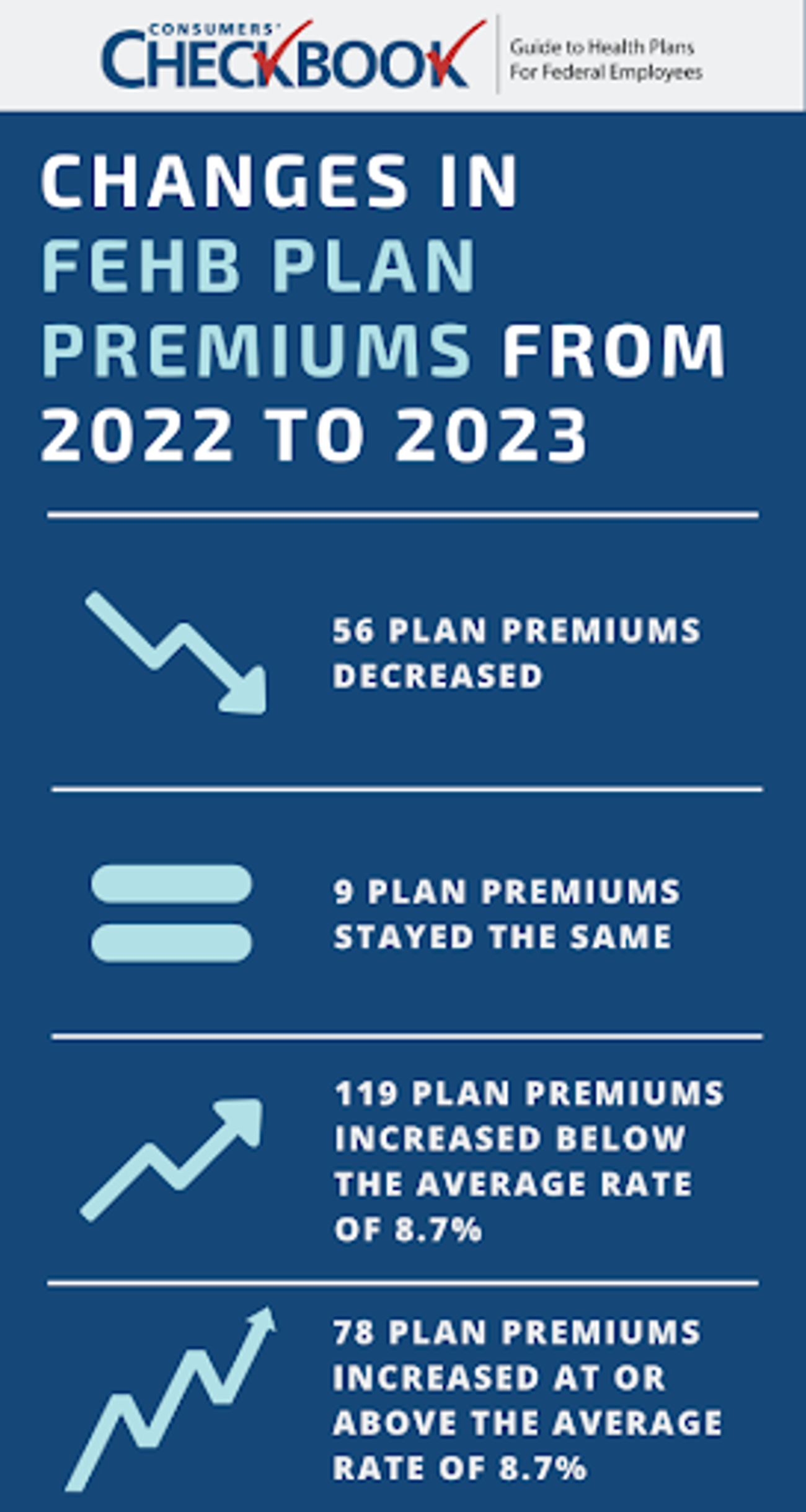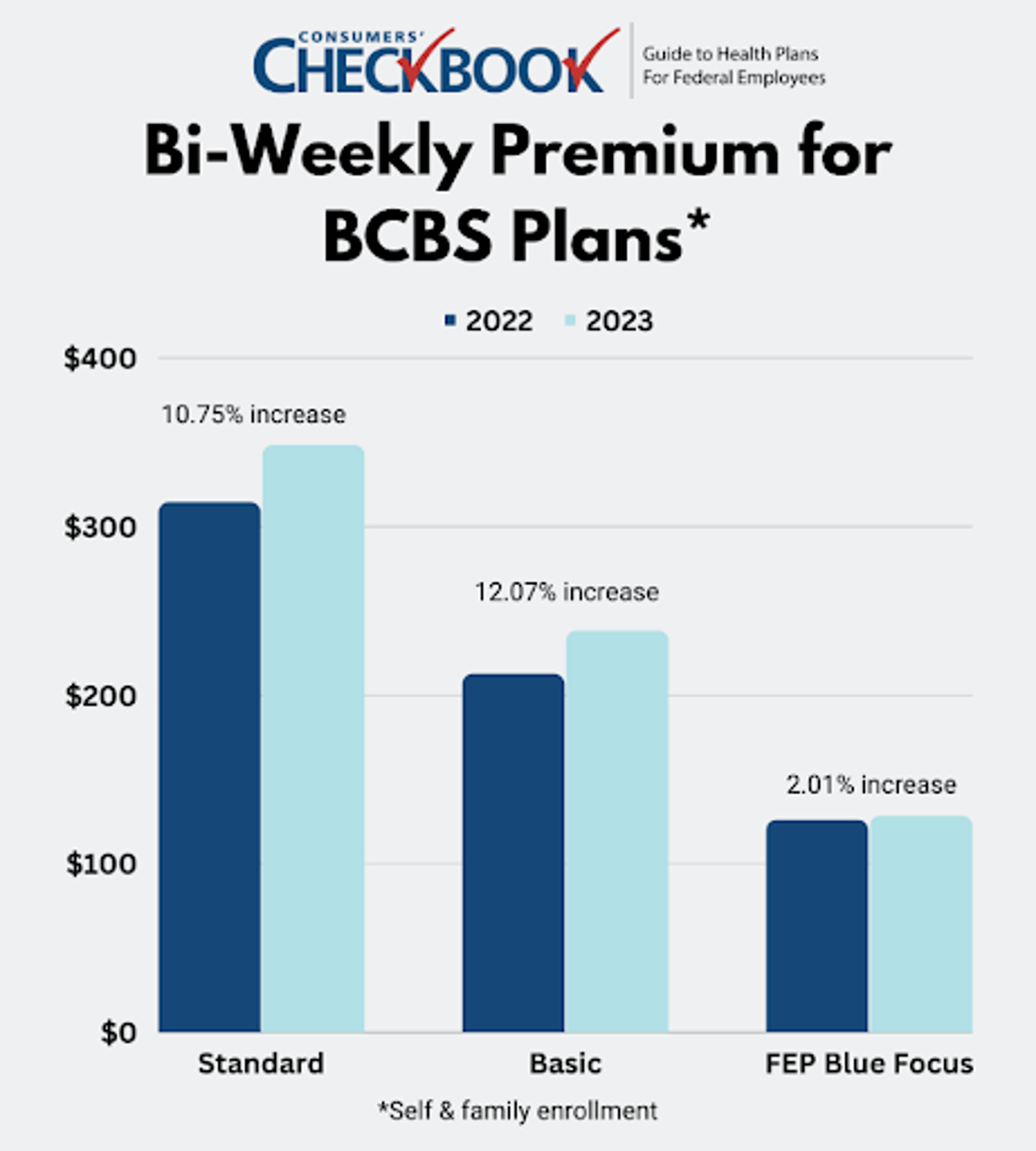A Closer Look at 2023 Federal Employee Health Benefits Premiums
Wondering how the increase might impact your FEHB plan choice? We’ll walk you through it.
OPM recently released a first look at the 2023 Federal Employees Health Benefits Open Season and employees and annuitants will, on average, pay 8.7% more in FEHB premiums next year, the largest percentage increase in the last decade. OPM cites the coronavirus pandemic’s impact on the healthcare industry as the primary driver for higher FEHB premiums in 2023.
So how will this increase impact your FEHB plan choice for the upcoming Open Season? We’ll walk you through the changes in popular plans, discuss which ones saw their premiums increase above and below the average, and provide an update for annuitants on Medicare Part B premiums for 2023.
How Premiums are Changing in 2023
While the average enrollee share of premium is increasing 8.7%, not all plans reflect this trend. For the 262 FEHB plans that were available in 2022 and are available again in 2023, premiums decreased in 56 plans, stayed the same in 9 plans, increased less than the 8.7% average in 119 plans, and increased 8.7% or more in 78 plans.

Some of the increases and decreases are huge. For example, for active federal and career postal employees, the largest decrease in percentage enrollee share of premium comes from Health Plan Nevada High (NM), which will cost 36.5% less in 2023 compared to 2022, saving self-only enrollees more than $1,300. Aetna Advantage, a national PPO plan, has the same premium in 2023 as 2022. The biggest increase in percentage enrollee share of premium comes from Presbyterian Health Plan Standard (PS) available in New Mexico, which will cost 49.5% more in 2023 compared to 2022, or an extra $1,155 for self-only enrollees.
Percentage increase sometimes doesn’t tell the full story on how higher premiums will impact your finances. Humana Health Plan High (9F) available in Illinois will cost enrollees 34.2% more, but because of the very high 2022 bi-weekly premium, the 2023 percentage increase has a greater impact. Next year, self-only enrollees in that plan will pay an extra $6,510.
How did your plan’s premium change? Even if you’re satisfied with your existing choice, it will most likely be more expensive in 2023. But not all premiums rose at the same rate, and there may be new plan bargains available to you. You’ll want to make sure you know how this important for-sure expense will impact your budget in 2023.
Blue Cross Blue Shield
Almost two-thirds of federal employees are enrolled in one of the Blue Cross Blue Shield (BCBS) plans—Standard, Basic, or FEP Blue Focus. How did the BCBS plan premiums change?

Standard and Basic enrollee premium shares increased at a higher rate than the average, while FEP Blue Focus is well below the average increase.
This upcoming Open Season is a good opportunity to assess whether your current plan is still the best fit for your needs. For BCBS Basic and Standard plan members, are you enrolled in the right BCBS plan? Now is the opportunity for you to save one or two thousand dollars a year in premium by switching to FEP Blue Focus.
Of course, there are many differences between the Standard, Basic, and FEP Blue Focus plans, but two of the most important are that Standard is the only one of the three where can you see out-of-network providers or receive mail-order prescription drugs (Basic has mail-order prescription drug coverage only for annuitants with Part B). If you’re enrolled in Standard and don’t use those two benefits, you’ll save money switching to Basic or FEP Blue Focus and you’ll get to keep your existing BCBS in-network providers.
Self-Plus-One vs Self & Family Enrollment
Married couples and two-person families can enroll as self-plus-one or self & family. Most of the time, self-plus-one is the less expensive enrollment choice, but not always. In 2023, there are 86 FEHB plans where self & family enrollment is less expensive than self-plus-one, and 12 plans where the premiums are the same.
There is a sizable amount of money at stake that you could save, or waste, based on your enrollment decision. For example, a two-person family interested in the D.C. area Kaiser High (E3) plan can save $50.90 bi-weekly enrolling as self & family compared to self-plus-one. That adds up to $1,323 annually.
You can find enrollment premiums by family type on the last page of any FEHB brochure (found on the OPM plan comparison tool and Checkbook’s Guide to Health Plans) once they are released in November, just before the start of Open Season. Look for the enrollee share of premium and choose the enrollment option that is lower. You receive the same plan benefits regardless of enrollment type.
Annuitants
One piece of good news for many annuitants is that the Medicare Part B premium will be $5.20 less in 2023 at $164.90 per month, down from $170.10 in 2022.
Overall, even with the small decrease in Part B premiums, healthcare expenses will be going up for annuitants as the vast majority of FEHB plans will have premiums increase much more than the Part B premium reduction savings.
“However, there is one additional bright spot for many annuitants. The 2023 Social Security cost-of-living-adjustment (COLA) will increase payments by the highest amount since 1981, 8.7%. This will help soften the blow of higher FEHB premiums.
The Final Word
Your FEHB premium will most likely be going up in 2023, and possibly by quite a bit. The 8.7% increase is only an average, many plans will cost more. While only one factor in your overall plan selection decision, the premium is an important one because it is a for-sure expense. You absolutely must check to see how yours is changing for 2023 and consider whether another plan is a better value for you and your family. The 2023 FEHB Open Season starts Nov. 14 and ends Dec. 12.
Kevin Moss is a senior editor with Consumers’ Checkbook. Checkbook’s 2023 Guide to Health Plans for Federal Employees will be available on the first day of Open Season, Nov. 14. Check here to see if your agency provides free access. The Guide is also available for purchase and Government Executive readers can save 20% by entering promo code GOVEXEC at checkout.
NEXT STORY: It's Time to Prepare for Open Season








